
by Lauren Goldsby | Dec 4, 2025

Agriculture is not the first thing that comes to mind when you’re in Bay County, especially when you’re enjoying a day at the beach! In the 2022 Census of Agriculture, 139 farms were reported, covering more than 70,324 acres. Much of what’s counted as farmland in Bay County is forested land managed for timber rather than traditional row-crop agriculture. Other commodities include hay, berries, livestock, honey and aquaculture. Together, agricultural sales generated $3.69 million dollars in 2022. Agriculture exists here, but it is not the primary economic driver. Tourism plays a much larger role, bringing $3.1 billion in visitor spending and supporting over 35,000 jobs.
This can be a common in areas where there is a large amount of tourism. Both systems depend on healthy natural resources, for different but equally important reasons. This is especially true when it comes to water, which makes up 27% of the county by area. Large scale producers use Best Management Practices (BMPs) to reduce the amount of chemical and nutrient runoff into our water systems.
If an area does not have a lot of agriculture does that mean we are safe from pollution in our water? No. Runoff isn’t just a problem in agricultural systems. A single lawn may not contribute much on its own, but when you add them up they can become a significant source of water pollution.
One of the easiest ways you can reduce impacts on our water resources is with how you fertilize your lawns. Here are some residential BMPs you can follow in your own yard. If you are fertilizing next to a body of water, leave a 10-foot strip unfertilized on the water’s edge. Don’t apply more than 1 pound of slow release nitrogen per 1,000 square feet at a time or exceed 4 pounds per 1,000 square feet per year. If you are using a quick release nitrogen do not apply more than ½ pound at one time for the same area. This chart below can be used to calculate how much fertilizer that is based on the percent of nitrogen. Nitrogen is always the first number, followed by phosphorus and potassium. Remember that right now your lawn doesn’t need any fertilizer. Dormancy is a protection from winter freezes, and fertilizer put out now will not be taken up effectively by dormant grass.
| Nitrogen percent in fertilizer |
Pounds of fertilizer to apply 1lb of nitrogen / 1000 sqft |
| 5% |
20 lbs |
| 10% (10-10-10) |
10 lbs |
| 20% |
5 lbs |
U.S. Department of Agriculture, National Agricultural Statistics Service. (2022). 2022 Census of Agriculture, Bay County, Florida. https://quickstats.nass.usda.gov/
Bay County Chamber of Commerce. (2025). Business & community profile. https://panamacity.org/tourism-business/

by Lauren Goldsby | Oct 23, 2025
One of my favorite ways to spend the morning lately is in the garden drinking my coffee. There’s no intended purpose, other than to look and see what I can find. I always end up finding something interesting! Scouting your garden does not have to be a formal process, but it is more effective when done regularly. This can help to avoid the “it happened overnight!” phenomenon that we hear frequently. Pests and diseases do not typically cause damage that quickly. Regular scouting helps you notice small symptoms before they become big problems. Training your brain to notice these small changes happens over time with your scouting, but just like any new skill, you need to practice! Give it a chance and watch the tiny world open up around you. Come scout the garden and see what we find.
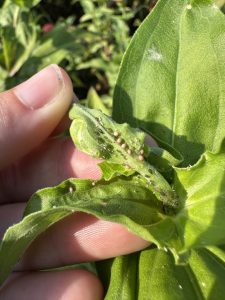

In this photo you can see a close up of the mummified vs. regular aphids. For more information on parasitic wasps and other natural enemies see: https://edis.ifas.ufl.edu/publication/IN120
I noticed some wrinkled leaves on the new growth of a zinnia. Wrinkled new growth can be a sign that a piercing-sucking insect is causing damage. Turning over the leaves revealed aphids, a common culprit on zinnia. In this photo we can see aphids in a few different life stages. Importantly, we also see that some of the aphids are serving as food for beneficial insects. These mummified aphids are the ones you see with tan, golden bodies that are larger and more round. A small, parasitic wasp larvae, is living inside the aphids body– using it for protection and food until it is ready to emerge. These are good signs of a healthy working ecosystem and they can help keep aphid populations in control. This helps me to know that there are aphids in my zinnias, but that I don’t need to do anything about them right now. Natural predators are at work and can be more effective than chemical applications at this time. If you need help identifying insects in your garden, reach out to your local extension office. Not all insects on our plants are causing harm; and some are actually helping decrease pests.
I don’t always find pests in the garden. Sometimes I realize the irrigation timer was turned off or I take a really pretty picture for my instagram story (see below). These are still wins in my book! Remember that your landscape is an entire ecosystem and you are a part of it. It’s a great practice to walk around and take an intentional look at your plants when you get the chance, you may see something cool!
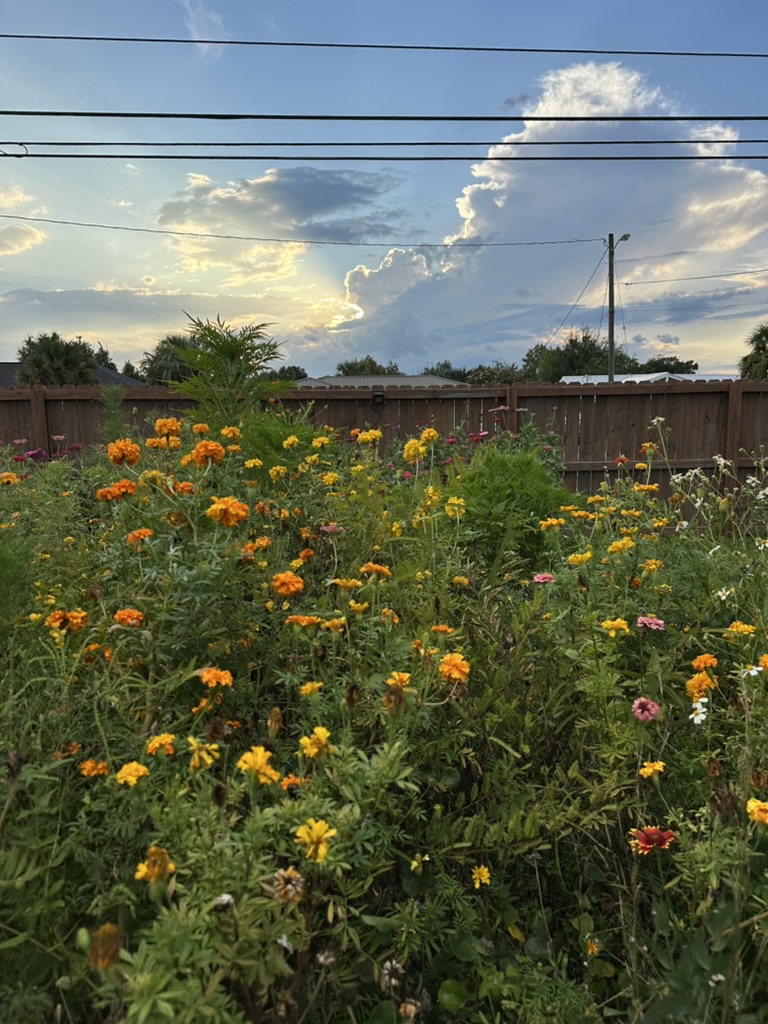
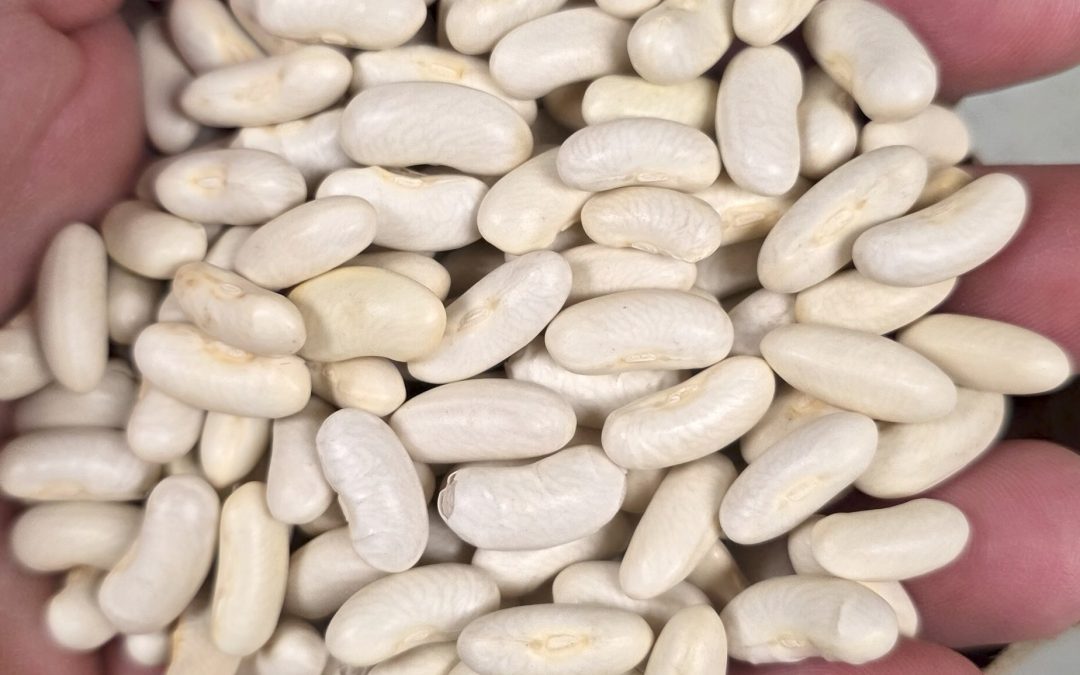
by Lauren Goldsby | Sep 25, 2025
While planning my fall garden I have been partaking in one of my favorite pastimes—shopping for seeds. This is always more fun to me than planting the seeds. Seeds come in many different packages and just like wine, you can be drawn in just from the carefully crafted label. Many of the seed labels I encountered shared the same marketing phrase, “non-GMO seeds”, which is like seeing a gluten free label on your pineapple. It was never an option!
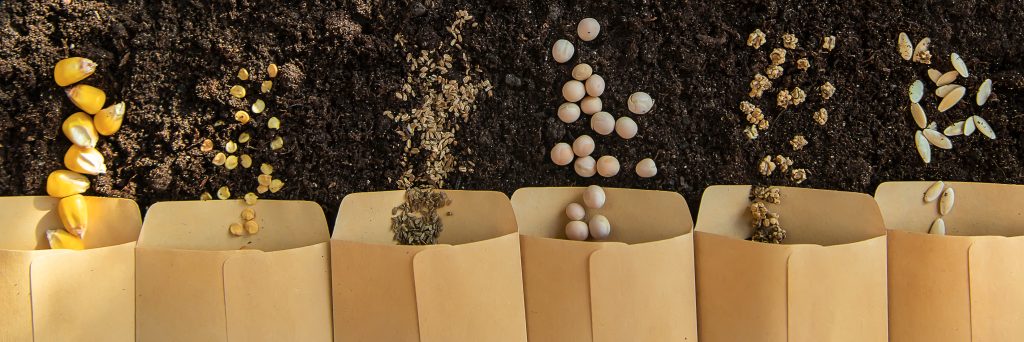
Genetically engineered plants take decade(s) to produce, test and release. They are expensive and are not typically sold in small quantities. These patented seeds will not be sold to you by accident. GMO crops that are grown and sold in the US on a commercial scale include alfalfa, apple (Arctic), canola, corn, cotton, eggplant, papaya, pineapple (pink), potato, soybean, squash, sugarbeet, and sugarcane. More information about each crop here: https://www.ams.usda.gov/rules-regulations/be/bioengineered-foods-list
Recently, a few GE seeds have been developed for the home gardener.

The Firefly Petunia glows in the dark thanks to the insertion of genes from a bioluminescent mushroom. More info
The Purple Tomato has purple skin and purple flesh thanks to the insertion of snapdragon genes. This is the first genetically engineered food crop developed for the home gardener. More info
These seeds are only available from certain retailers, and you will pay a premium for this technology.
When purchasing seeds consider other factors like season and variety. “Right plant, right place” – you hear us say those four words again and again here at the Extension Office. That’s because plant selection is one of the most important things to consider for gardening success. If you were to start a watermelon from seed right now it may do well at first. However, they thrive in the heat of the summer, and they will not like the short, cool fall days. A plant growing in the wrong environment will be stressed. That stress attracts pests and can make a plant more susceptible to pathogens.
Set yourself up for success by growing plants when they are in season. Don’t be tempted by the seeds you see on the aisle end caps. These are not always specific to each region and just because they are selling it now does not mean it should be grown right now. Decide what you are going to grow before you go to the store! The Florida Panhandle Planting Guide is a great resource to use for planning your garden. If you find that you purchased seeds for the wrong season save them for the next one—and consider that your newest hobby may be seed collecting.
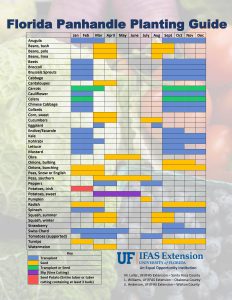

by Lauren Goldsby | Jul 31, 2025
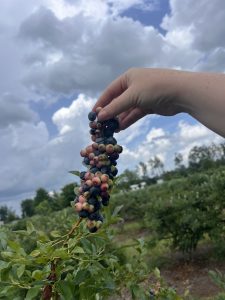
Blueberry flower buds are formed at the cane ends.
When, how, and if you prune your blueberries depends on your goals and how you want to manage your plants. Pruning is usually done to control plant height, open up the canopy, and remove older canes that are less productive. Blueberry canes form flower buds starting from the upper ends of the stems. As plants grow taller, the best berries develop higher and higher. Lower, shorter canes will still produce fruit, but the upper canopy can shade them, leading to fewer berries within easy picking height. Rabbiteye varieties common in the Panhandle can reach 20 feet (7 m) if left unpruned. Some gardeners like leaving the upper berries for birds while harvesting the lower fruit for themselves, while others prefer to prune plants shorter to keep berries within easy reach.
Blueberry plants can be pruned at two main times of year:
After harvest (summer): This is the time to reduce plant height, but it must be done soon after the last berries are picked and before fall, when flower buds form inside the stems. If you wait too long, you risk cutting off next season’s flowers and losing fruit. After summer pruning, it’s a good time to apply an acid-loving plant fertilizer to encourage new growth.
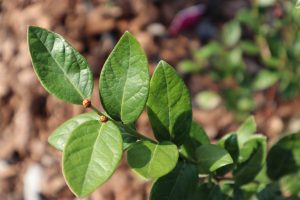
Once buds are visible, it’s too late to prune for height without losing berries.
During dormancy (winter): In winter, you can remove dead, damaged, or old unproductive canes to open up the canopy and allow for new growth. Avoid removing more than 30% of the total canes in a single year. Winter is also when fruit thinning can be done. If there are too many buds on the plant, the berries may stay small. By selectively removing canes, the plant can produce fewer but larger berries.
Pruning can be an important management tool, but it isn’t mandatory. If you choose to prune, make sure to do it at the right time for your goal- whether it’s controlling height, encouraging bigger berries, or simply refreshing older plants. See the chart below for a seasonal guide to pruning and fertilizing blueberries in the Panhandle. Pruning and Fertilizing Handout Download
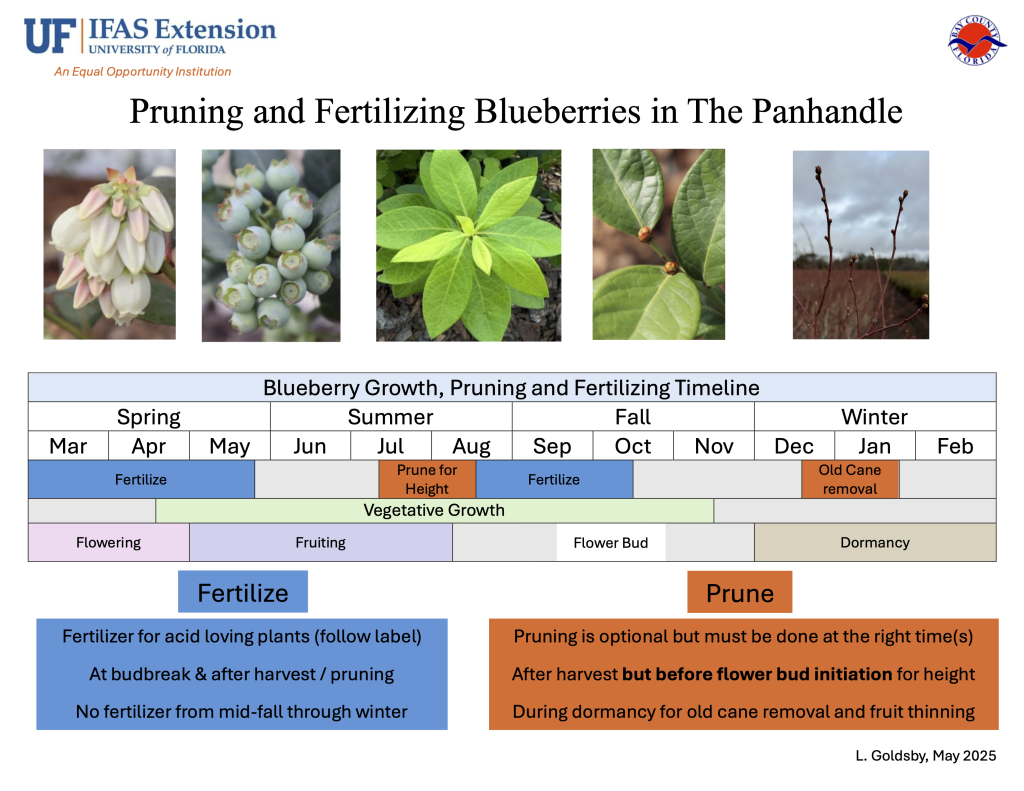
by Lauren Goldsby | Jun 13, 2025
Most gardeners I know love to share plants. Propagating and dividing them can be just as much fun as growing them. Some of my favorite plants in the garden came from loved ones offering a cutting or telling me to dig up whatever I liked.
Lately, I’ve been thinking about how plants can serve as living memories of loved ones who are no longer with us. Many of the plants in my garden are there for that reason- some without me even realizing it. My home garden has become a small collection of plants and memories associated with those plants, and I am the proud keeper of their stories.

My dad’s fig tree came from a cutting of his grandfather’s fig tree. Newer varieties may yield more and resist disease better, but nothing compares to the fruit you grew up eating with your grandparents on the Fourth of July.
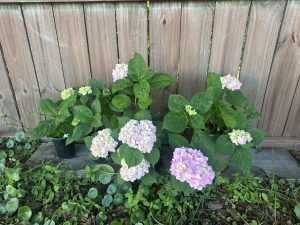
This year, for the first time, I got to enjoy hydrangea blooms from my late grandparents’ home. Before their house was sold, my aunt took last-minute stem cuttings from the bushes. After three years, they’re finally healthy enough to flower- and soon, I’ll take more cuttings to share with the rest of the family.
Sometimes, just being in the garden helps you feel closer to loved ones and the memories you shared. Even if it’s not the same exact plant, growing something they once grew can help you feel connected to them.
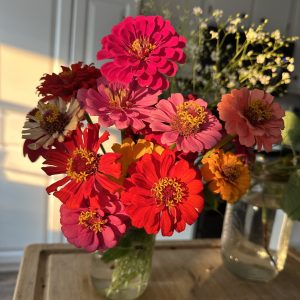
My great-grandmother always said you should have flowers growing in your garden so you can cut them and bring them to people when you visit. When I cut flowers from my garden for friends and family I feel like I am keeping her tradition going.
There are so many plants you can propagate and grow yourself. If you talk to someone who’s been propagating for a while, they’ll likely tell you that it’s as much an art as it is a skill. Try out different plants and methods to see what works best for you. Here’s a great video to get you started with the basics of plant propagation: FFL Plant Propagation Basics.
Are there any plants you grow because of a loved one? It’s never too late to start.

















